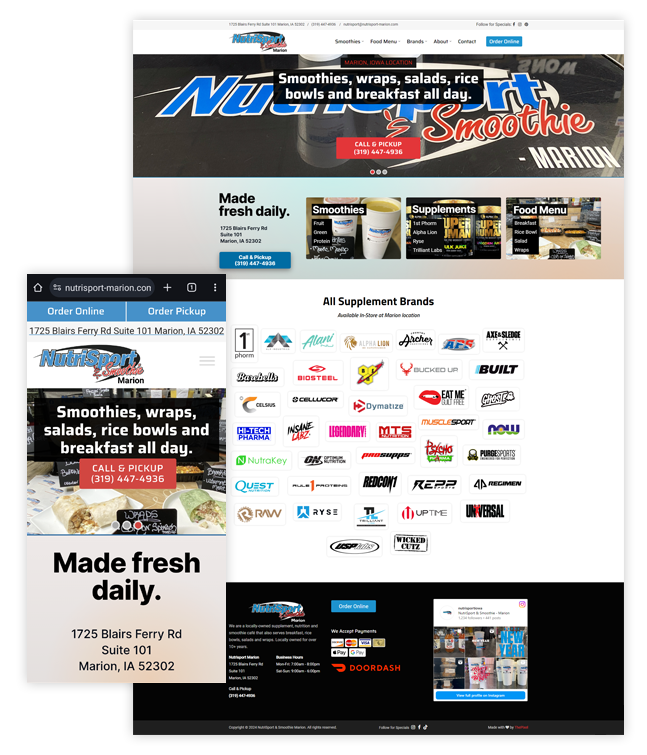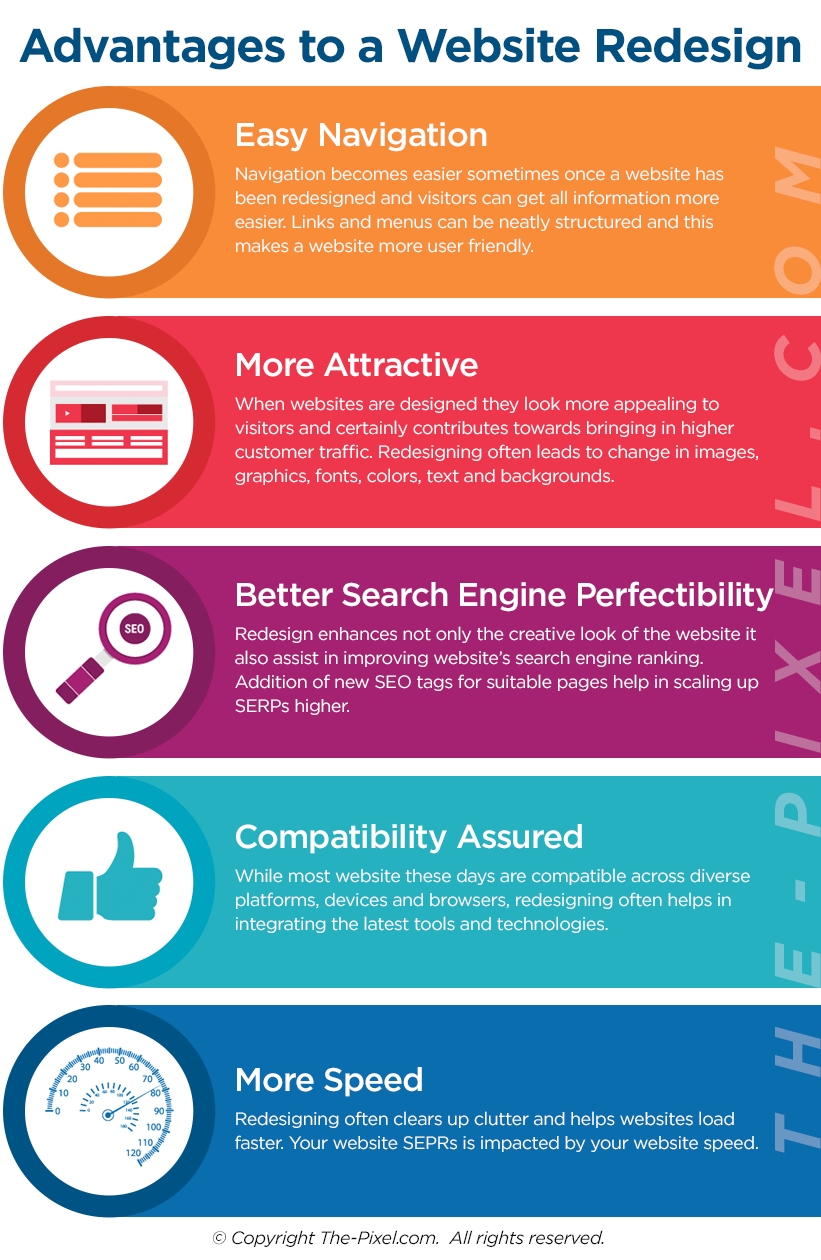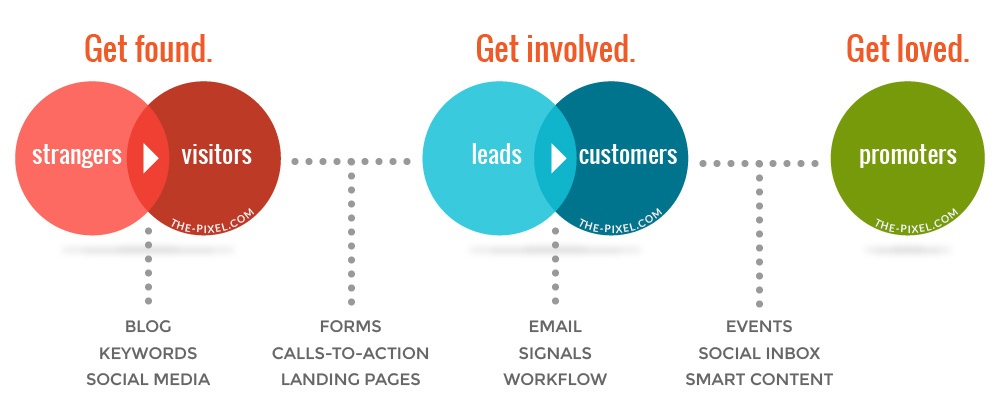Launch a Business Website
Launch a Business Website
Maximize the effectiveness of your website. Ready to launch your new business website?
Your company’s website serves as a window into your business and is often the first impression a potential customer has of your services, products, and company’s reason for being. Making sure your site showcases your company in the best possible light is vital to the success of your business.
1. A clean, professional and brand-driven website design
Visitors to your site will form an opinion about your business within a few seconds. Your site should be clean, professional, and convey your company’s brand / image. The navigation should be straight-forward and make it easy for visitors to find the information they are seeking with one or two clicks. And, what your business does should be easily discernible within a few seconds.

2. Well written content that speaks directly to your target audience
While a good design is important, the content on your site is crucial. This content needs to speak directly to your target audience. The copy should be written in a professional, yet conversational, tone and should impart a sense of the company’s personality. If the copy is dry and too “corporate”, you run the risk of losing your visitors’ interest and their business.
Most business websites include some or all of the following types of content that helps to tell their story and provide information on the services & products they offer:
- About Us/Who We Are
- Product Information
- Service Information
- Photo Gallery
- Portfolio of Work/Projects
- Case Studies
- Awards & Recognition
- Employment Information
- Employee Directory
- Features & Benefits
- Warranty & Return Policy Info
- Informational Pages
- Video Files (Demos, Info, etc.)
- Database
- FAQs
- News
- Articles/Forms/Docs
- Affiliates / Partners
- Privacy Policy
- Customer Service
- Upcoming Events
- Links/Resources
- Customer Testimonials
- Contact Us Info
- Request Info/Service/Quote Form
- E-newsletter Info & Sign-up
- Order Form
- Membership Application
- Buy Now Buttons (Simple E-commerce)
- Shopping Cart (Advanced E-commerce)
- Members Only/Password Protected Area

Including an “About Us” page, a “Portfolio”, “News & Events”, etc. on your website is important and visitors will become suspect if this type of information is not present on your site. However, one of the main goals of your website should be to educate your audience, not sell them. Your visitors have come to your site with a need or desire. They don’t want to be sold. They want to make an educated decision and want to know about their options and how your products or services will provide solutions to their problems. Creating your website’s content with a focus on educating visitors will make it easier to shift the focus away from your business and onto your potential customers and what’s in it for them.
The following types of tools can be used cost-effectively to educate your target market and should be used to feature educational material on your site on a regular basis for maximum benefit:
- eBooks – Address Problems Your Target Market Faces.
- Videos or Vodcasts – How-to Info, Interviews, Case Studies
- Podcasts – Interviews, Weekly Broadcast
- White Paper – Research-based Information
- Blog Posts – Regular Posts with Useful, Relevant Information.
- Case Studies – Showcase Your Customers and How Your Products or Services Helped Them.
- Email Newsletters – Monthly Articles, How-to Info
3. Make your content sharable and easy to subscribe to
The easier you make it for people to share and subscribe to the content on your site, the more likely your target market will share it with their network (many of whom share similar demographics, needs & desires) and be exposed to your company on an ongoing basis. Adding Facebook “Like” buttons, or “Share This” capabilities, RSS buttons & blog email subscription capabilities to articles, posts, case studies, etc. makes it super easy for visitors to receive your content and share it with others.
4. Place calls-to-actions on every webpage
It’s important to place calls-to-action (CTAs) on each page of your website so your prospects can easily take the next step (fill-out a “Request a Quote” form, click on the “Buy Now” button, sign-up for your monthly e-newsletter, etc.) once they’ve determined your business is a good fit for them and can solve their problems. Ideally, a call to action should be placed at the end of the text on each web page and on the top-right side of each page. The more prominent the call to action button, the more likely a visitor is to click on it.

5. Optimize each webpage for the search engines
When seeking out products or services, customers are using search engines above all else to conduct searches. For this reason, each page of your website should be optimized and set-up in a way that makes it easy for the search engines to capture the information.
On each page, the following elements should be present:
- Page Title with Your Top Keywords
- Keyword-rich Content (strive for 4% keyword density)
- Strong Keyword-rich Headlines
- Heading Tags in HTML to Let Search Engines Know What’s Important on the Page
- Keyword Rich Alt Tags on Images
- Keyword Rich URLs for Text Links
- Clean CSS / HTML Code (this makes it easy for search engines to separate the design from the content)
It is important to have a deep understanding of your target market’s needs and desires so you can capture your ideal prospects’ attention quickly by speaking directly to them with your marketing message. Incorporating these six criteria into your website will help you to maximize the effectiveness of your website and your company’s reach.
Hire ThePixel to build your next website!
Since our founding in 2008, we’ve created and launched many types of business websites. Over the last decade and we’ve learned a thing or two! That’s why we’re masters of our craft, let us help you build the website of your dreams – one that generates traffic, leads and conversions.
Are you ready to start? If yes, contact ThePixel and one of our representatives will guide you through the website phases and how the process works either by a Zoom Meeting or phone.


